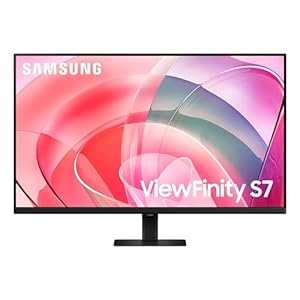An area startup in China nearly pulled off a vertical touchdown check of its prototype rocket, however the launch automobile skilled an anomaly on the final second, inflicting it to crash onto the touchdown pad and erupt in flames.
Deep Blue Aerospace launched its Nebula-1 rocket for its first high-altitude restoration check flight on Sunday, and tried to land it again on the Ejin Banner Spaceport in Interior Mongolia. The rocket lifted off to an altitude of round 3 miles (5 kilometers) above the bottom but it surely fumbled the touchdown, main the corporate to declare the check mission as “not utterly profitable,” in keeping with a statement by Deep Blue Aerospace.
A drone captured the check flight in vivid element, leading to a cinematic, two-minute video crammed with unimaginable views of the launch. The video sadly ends with Nebula-1 hitting the touchdown pad and going up in flames, however even its failure appears fairly cool, so it wasn’t a complete loss. The dramatic video brings to thoughts SpaceX’s early makes an attempt to check the reusability of its rockets, wherein even explosions have been seen as partial victories. It appears Deep Blue Aerospace could also be drawing from SpaceX’s playbook, utilizing these fiery shows for publicity whereas taking a unique path than what we sometimes see from Chinese language area firms.
Throughout descent, the rocket misjudged its touchdown altitude, resulting in an early engine shutdown. Nonetheless vertically oriented, it slammed into the touchdown website, triggering a fiery explosion. “There are a complete of 11 main check verification duties,” Deep Blue Aerospace wrote in its assertion. “On this flight check, 10 of them have been efficiently accomplished and 1 was not accomplished.”
Deep Blue Aerospace is one among a number of Chinese language rocket startups aiming to launch and get better their autos in an effort to match SpaceX’s success with its reusable, two-stage Falcon 9 rocket. Earlier this 12 months, Chinese language startup Landscape pulled off its first flight test of a reusable first stage prototype. The rocket reached an altitude of round 1,000 ft (350 meters) and landed inside about 7 ft (2.4 meters) of its designated landing spot.
Nebula-1 is 11 ft broad (3.35 meters), barely smaller than the Falcon 9 rocket, which measures 12 ft in diameter. As soon as licensed, the rocket needs to be able to carrying 4,400 kilos (2,000 kilograms) to low Earth orbit, and an upscaled model might raise 17,000 kilos (8,000 kilograms). SpaceX’s Falcon 9 rocket can carry about 55,000 kilos (25 metric tons) to low Earth orbit, and its Falcon Heavy rocket has a payload capability of round 141,000 kilos (64 metric tons).
The rocket trade in China has been selecting up steam after the Chinese language authorities allowed investments to circulation into spaceflight firms quite than proceed to let state-owned enterprises dominate the sector. Corporations like Deep Blue Aerospace are losing no time of their makes an attempt to develop rocket reusability, with plans to make one other try at a restoration check flight of Nebula-1 in November.
Extra: Sorry, Elon: Chinese Company Becomes the World’s First to Launch Methane Rocket to Orbit
Trending Merchandise

SAMSUNG FT45 Sequence 24-Inch FHD 1080p Laptop Monitor, 75Hz, IPS Panel, HDMI, DisplayPort, USB Hub, Peak Adjustable Stand, 3 Yr WRNTY (LF24T454FQNXGO),Black

KEDIERS ATX PC Case,6 PWM ARGB Fans Pre-Installed,360MM RAD Support,Gaming 270° Full View Tempered Glass Mid Tower Pure White ATX Computer Case,C690

ASUS RT-AX88U PRO AX6000 Dual Band WiFi 6 Router, WPA3, Parental Control, Adaptive QoS, Port Forwarding, WAN aggregation, lifetime internet security and AiMesh support, Dual 2.5G Port

Wireless Keyboard and Mouse Combo, MARVO 2.4G Ergonomic Wireless Computer Keyboard with Phone Tablet Holder, Silent Mouse with 6 Button, Compatible with MacBook, Windows (Black)

Acer KB272 EBI 27″ IPS Full HD (1920 x 1080) Zero-Frame Gaming Office Monitor | AMD FreeSync Technology | Up to 100Hz Refresh | 1ms (VRB) | Low Blue Light | Tilt | HDMI & VGA Ports,Black

Lenovo Ideapad Laptop Touchscreen 15.6″ FHD, Intel Core i3-1215U 6-Core, 24GB RAM, 1TB SSD, Webcam, Bluetooth, Wi-Fi6, SD Card Reader, Windows 11, Grey, GM Accessories

Acer SH242Y Ebmihx 23.8″ FHD 1920×1080 Home Office Ultra-Thin IPS Computer Monitor AMD FreeSync 100Hz Zero Frame Height/Swivel/Tilt Adjustable Stand Built-in Speakers HDMI 1.4 & VGA Port

Acer SB242Y EBI 23.8″ Full HD (1920 x 1080) IPS Zero-Frame Gaming Office Monitor | AMD FreeSync Technology Ultra-Thin Stylish Design 100Hz 1ms (VRB) Low Blue Light Tilt HDMI & VGA Ports







